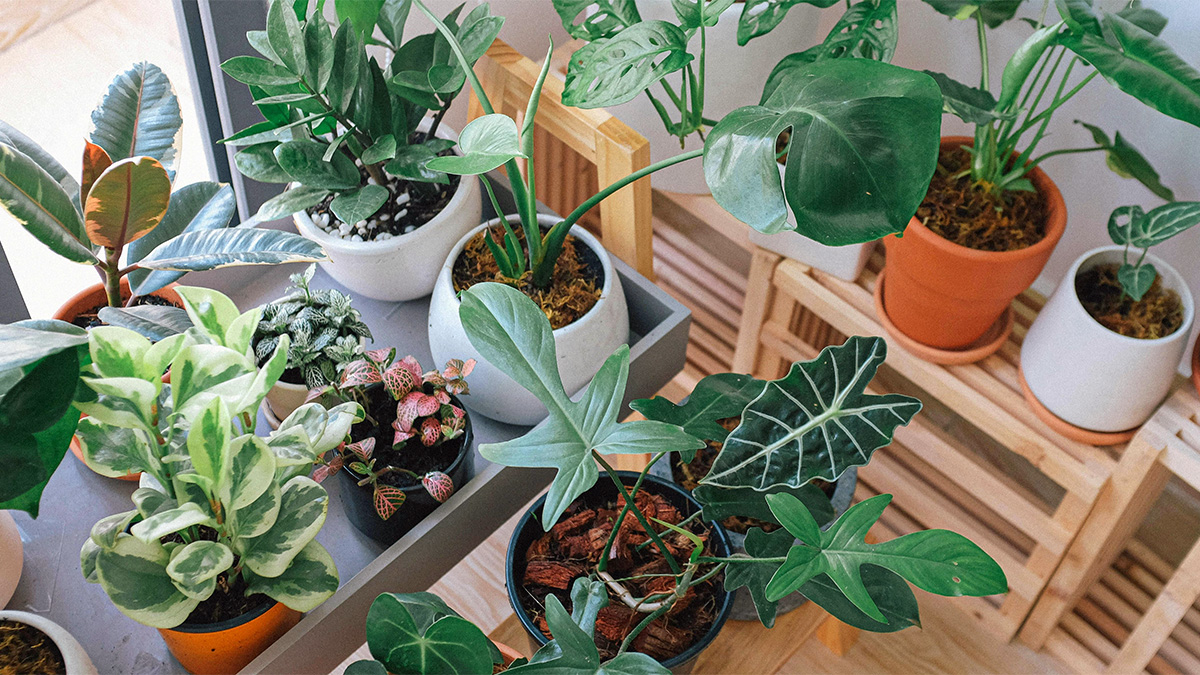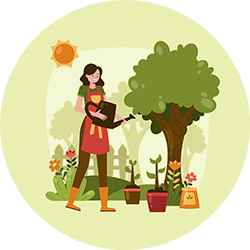Common Reasons You May be Struggling to Keep Your Houseplants Healthy

Keeping houseplants alive can feel harder than it should, especially when they seem to decline without warning. The truth is, most plant troubles come down to a few common issues. Understanding these simple causes can help you prevent problems and enjoy healthy, thriving plants in any room of your home.
Related: Feeding Houseplants: How And When To Fertilize Indoor Plants
1. Overwatering
One of the most frequent causes of houseplant decline is overwatering. Many indoor plants prefer their soil to dry slightly between waterings, and too much moisture can quickly lead to root rot. If the soil feels constantly wet and the leaves are yellowing or mushy, it’s time to scale back.
Make sure you’re checking the top inch or two of soil before adding more water. Each plant has its own moisture needs, so learn what works best for the specific species. Always use your finger or a moisture meter to test before reaching for the watering can.
2. Poor drainage
Even with careful watering, poor drainage can suffocate roots and cause decay. Pots without drainage holes trap excess water, and the roots sit in soggy soil for too long. This creates an unhealthy environment where disease and rot thrive.
Choose pots with drainage holes and pair them with saucers to catch excess water. Use a well-draining potting mix tailored to your plant’s needs, such as cactus mix for succulents or moisture-retentive blends for tropicals. A layer of gravel at the bottom of the pot is not a substitute for proper drainage.
3. Not enough light
Light is essential for photosynthesis, and many indoor plants struggle without it. If your plant has pale or yellowing leaves, long leggy stems, or stops producing new growth, it may not be getting enough light. This is common in rooms with north-facing windows or where curtains block direct sun.
Pay attention to where the light falls in your home and place plants accordingly. Low-light plants like pothos or snake plant can survive in dimmer spots, while others like fiddle leaf figs need bright, indirect light. If natural light is lacking, consider using a small grow light to supplement.
4. Too much direct sunlight
While some plants love full sun, others burn easily under harsh rays. Browning leaf edges, bleached spots, and curled or dry foliage may indicate sunburn. This often happens when tropical houseplants are placed in south-facing windows without any filtering.
Move light-sensitive plants a few feet back from the window or use a sheer curtain to diffuse strong rays. Rotate plants regularly so each side receives balanced light. Some adjustment may be needed seasonally, as the sun’s angle shifts throughout the year.
5. Inconsistent watering schedule
Letting soil dry out completely, then flooding the pot with water, stresses most houseplants. This back-and-forth routine can damage roots and lead to leaf drop or stunted growth. While it’s important not to overwater, forgetting to water for days or weeks at a time creates its own problems.
Stick to a loose watering routine that matches your plant’s environment and type. Some plants like more consistent moisture, while others prefer a full dry-out between waterings. Checking the soil regularly will help you understand what your plant needs before problems develop.
6. Wrong pot size
Using a pot that is too large can cause the soil to stay wet longer than necessary, which may result in root rot. On the other hand, a pot that is too small can lead to a root-bound plant, where the roots circle the pot and struggle to take up nutrients or water. Both situations can affect growth and overall health.
When repotting, choose a pot that is only one or two inches wider than the current one. Make sure to loosen the root ball gently and refresh the soil during the process. Signs of a root-bound plant include roots growing out of the drainage holes or circling tightly inside the pot.
7. Pest problems
Even healthy-looking plants can suffer from unseen pests. Common indoor culprits include spider mites, aphids, scale, and fungus gnats. Early signs of infestation include sticky leaves, webbing, distorted growth, or tiny bugs crawling on the plant or in the soil.
Inspect plants regularly, especially under leaves and at the base of stems. Use insecticidal soap, neem oil, or a strong blast of water to treat minor outbreaks. Quarantine new plants for a week or two before introducing them to your collection to help prevent spreading pests.
Conclusion
Most houseplant failures stem from a handful of preventable mistakes. With better watering habits, proper lighting, and the right containers, your plants have a much better chance of thriving. A little observation and consistency can turn even a struggling plant parent into a confident indoor gardener.
